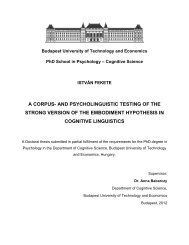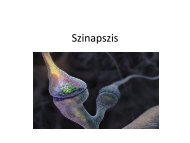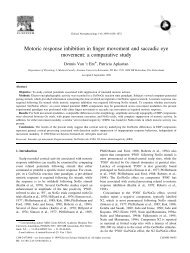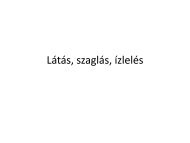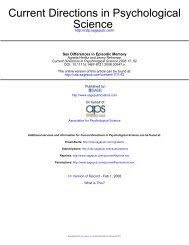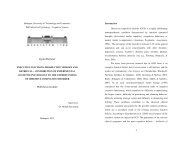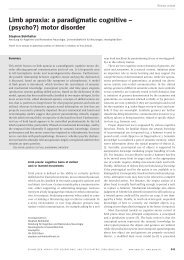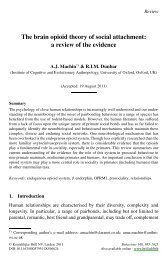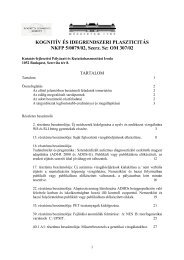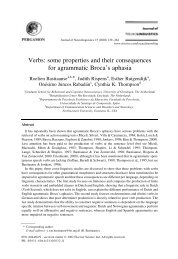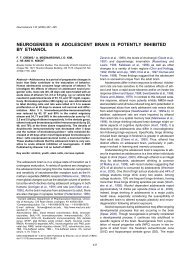Gyula Demeter
Gyula Demeter
Gyula Demeter
Create successful ePaper yourself
Turn your PDF publications into a flip-book with our unique Google optimized e-Paper software.
for PM actions. There are situations when we need to be prepared in some way for the<br />
potential occurrence of the target to be able to perceive it (Smith, 2003).<br />
The PAM theory argues that for an intention to be executed we have to devote some<br />
amount of our limited cognitive capacity to make decisions about how to respond to the<br />
environment around us and it refers to these as preparatory attentional processes. These<br />
processes prepare us for the return of the intended action to the focus of attention and are<br />
required during the performance interval (Smith, 2008). For example if we must remember to<br />
buy a book on the way back home, we must engage in preparatory processing during the<br />
interval when the opportunity to stop at a bookstore is possible but not during the whole day.<br />
The amount of available cognitive capacity and the capacity devoted to the ongoing<br />
activity influences the probability that an intention be completed and beside these according<br />
to the theory it can be said that successful PM also involves correctly recognizing the target<br />
events and recalling the intended actions (Smith, 2008). The core difference between the<br />
multiprocess framework (McDaniel & Einstein, 2000) and PAM theory is that the latter<br />
proposes that PM tasks for successful performance will always require resource-demanding<br />
preparatory processes, while the multiprocess framework states that there are cases when<br />
intentions are automatically retrieved.<br />
Theory of monitoring<br />
There is a recent concept that proposes that monitoring comprises two processes that<br />
demand resources: instantiating a PM retrieval mode and making periodic checks of the<br />
environment for an appropriate target to execute the intended action (Guynn, 2008). The<br />
retrieval mode concept refers to the mental set from the retrospective memory literature which<br />
is required by the attempt to retrieve information independent from its success or failure (see<br />
Tulving, 1983; 2002).<br />
There is a vast amount of data from cognitive neuroscience studies (fMRI, PET, ERP)<br />
supporting a specific right frontal activation pattern when subjects try to remember<br />
information from their past indifferent from its success (Nyberg et al., 1995; McIntosh,<br />
Nyberg, Bookstein, & Tulving, 1997; Rugg, Fletcher, Frith, Frackowiak, & Dolna, 1997).<br />
In PM research retrieval mode is also conceptualized as a task set to treat stimuli as cues<br />
to retrieve stored intentions (Guynn, 2008). Retrieval mode is a more continuous while target<br />
checking a more periodic process. The two component theory was elaborated in the context of<br />
event based prospective memory, but may also apply to time-based prospective memory.<br />
30



